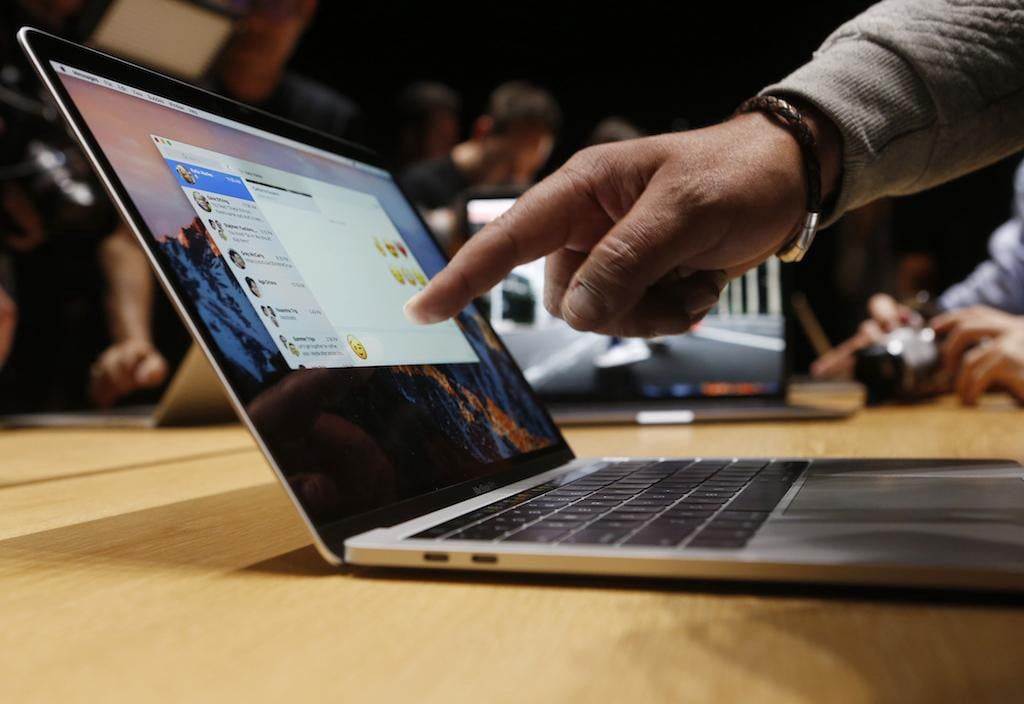Apple’s Convergence of Touch: The Future Blends Mac and iPad. Apple is reportedly gearing up to introduce a groundbreaking change to its Mac lineup, potentially integrating touch screen technology into its computers for the first time. This development could significantly blur the lines between Macs and iPads, suggesting a future where Apple’s computing devices share more features and capabilities than ever before.
Exploring the 2024 iPad Pro: A Major Leap Forward for Apple’s Tablet Line
According to Mark Gurman of Bloomberg, Apple has plans to make its iPads more powerful and Mac-like, effectively positioning the iPad as a true laptop replacement, a vision Steve Jobs had years ago. This shift indicates a strategic evolution in Apple’s product development, focusing on versatility and user preference.
The upcoming changes could lead to a scenario where choosing between an iPad and a Mac is not about which device is better but which configuration best suits the user’s needs—be it a straightforward laptop experience or a modular approach using an iPad with peripherals like the Magic Keyboard and Apple Pencil.
Integrating touch technology into Macs would represent a significant shift in Apple’s design philosophy. Traditionally resistant to merging touch screen interfaces with their laptop and desktop environments, Apple’s new direction suggests a response to the growing consumer demand for versatile and intuitive user interfaces.
Gurman hints that future high-end iPads will undergo a design overhaul that makes them look and function more like traditional computers. This could involve a new iteration of the Magic Keyboard with enhanced aesthetics and functionality, possibly featuring an aluminum finish that aligns more closely with the premium feel of MacBooks.
Implications for Users and Developers
The integration of touch screens on Macs could open up new avenues for application developers, creating opportunities to design more engaging and interactive apps that take full advantage of touch capabilities. It could also lead to significant changes in how users interact with their Macs, from creative professionals to casual users looking for a more tactile experience.
Apple’s Strategic Vision
This move is seen as part of Apple’s broader strategy to unify its ecosystem, making it easier for users to switch between or simultaneously use an iPad and a Mac. It reflects Apple’s ongoing commitment to innovation and adaptability, acknowledging the changing ways in which people use technology in their daily lives.
Consumer Expectations and Market Trends
As the lines between device categories continue to blur, consumers are increasingly looking for devices that can perform multiple functions seamlessly. Apple’s potential move towards a touchscreen Mac indicates an acknowledgment of these market trends and consumer preferences.
Historical Context
The idea of a touchscreen Mac has been a topic of speculation for years, but Apple’s focus on distinct operating experiences for the Mac and iPad has previously prevented such a development. The shift towards integrating touch technology into Macs represents a significant change in Apple’s strategic direction.
Future Possibilities
The introduction of touch technology to the Mac could be just the beginning. This change might pave the way for more hybrid devices in Apple’s future, potentially leading to the development of entirely new kinds of products that further blur the lines between laptops, tablets, and even smartphones.
Conclusion
Apple’s rumored move to bring touchscreen technology to the Mac marks a pivotal moment in the company’s history. It reflects a broader trend in technology towards more versatile, intuitive, and integrated devices. As Apple continues to push the boundaries of what its devices can do, the distinction between an iPad and a Mac may become less about the devices themselves and more about the choice of interface and form factor that best meets the needs of the user.
This shift in Apple’s product strategy not only highlights the company’s adaptability but also underscores its commitment to remaining at the forefront of technological innovation, shaping how technology transforms our lives at home, work, and everywhere in between.

